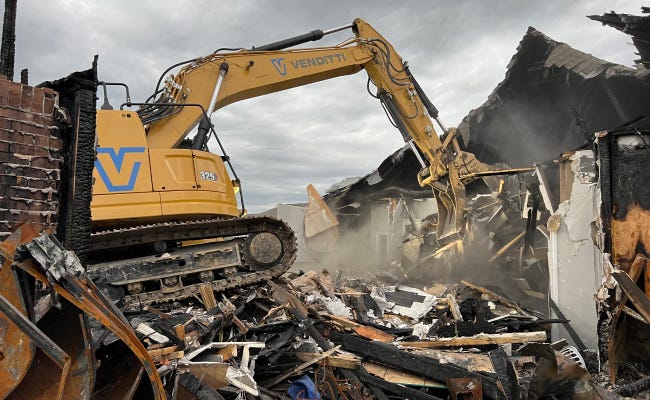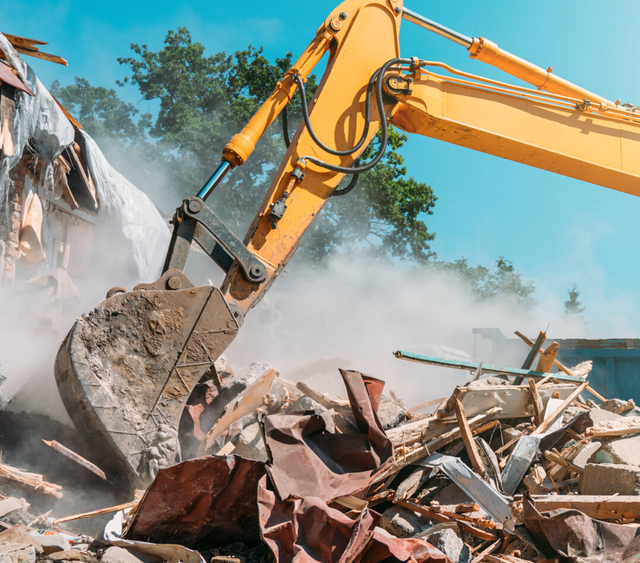Interior Demolition: Key Considerations and Ideal Practices
Interior Demolition: Key Considerations and Ideal Practices
Blog Article
The Ultimate Guide to Interior Demolition Techniques and Tools
Within the realm of interior renovations, the art of demolition is a crucial phase that calls for accuracy, skill, and the right set of tools. Whether you are a seasoned specialist or a Do it yourself enthusiast, comprehending the ins and outs of interior demolition strategies can make all the distinction in accomplishing an effective job end result.
Necessary Indoor Demolition Tools
When embarking on indoor demolition projects, having the proper tools is crucial for performance and safety. Among the most crucial devices for indoor demolition is the demolition hammer. This durable tool is designed to appear difficult products like tile, drywall, and concrete. Its powerful hammering action can swiftly destroy wall surfaces, floorings, and other structures. In addition, a lever is important for getting rid of fixtures, trim, and various other materials. Its utilize permits for the simple removal of nails and various other fasteners without harming the surrounding surface areas - interior demolition.
One more essential tool is a reciprocating saw, which is best for puncturing a variety of materials such as plastic, wood, and steel. Its capability to make accurate cuts in limited areas makes it optimal for demolition job. Moreover, an utility knife is required for reducing materials like carpeting, vinyl flooring, and insulation. Its sharp blade ensures accurate and tidy cuts, facilitating the elimination of undesirable products. Generally, having these important interior demolition devices will significantly enhance the performance and safety of any demolition job.

Safety Precautions Throughout Demolition

In addition, all workers associated with the demolition procedure must receive appropriate training on the correct handling of devices and equipment to decrease accidents. It is important to secure the job area by erecting indicators and obstacles to protect against unapproved access - interior demolition. Consistently checking and keeping devices and devices can also add to a much safer working atmosphere. By sticking to these security preventative measures, indoor demolition jobs can be performed effectively while focusing on the well-being of all people involved.
Strategies for Removing Walls
Carrying out correct security preventative measures throughout indoor demolition tasks is essential for producing a safe and secure working setting, and one crucial facet of such projects involves understanding methods for removing wall surfaces. One typically made use of technique is hands-on demolition, which calls for the usage of basic hand tools such as sledgehammers, crowbars, and energy knives to meticulously dismantle the wall surface item by piece. This method enables greater control over the demolition process, especially in delicate locations where accuracy is important.
For larger, a lot more complex wall surfaces, mechanical demolition might be essential. This entails utilizing heavy equipment like bulldozers or excavators to knock down wall surfaces efficiently. It is critical to guarantee that the architectural stability of the building is not jeopardized during mechanical demolition.
Another method for eliminating wall surfaces is deconstruction, where the wall surface is taken apart in a means that preserves recyclable products. This sustainable strategy is environmentally pleasant and can also aid minimize disposal prices. Whichever technique is employed, it is vital to comply with appropriate security protocols and think about the architectural effects of wall surface removal to make sure a successful interior demolition project.
Removing Flooring Like a Pro
Successfully getting rid of flooring during interior demolition requires the proper devices and techniques to make certain a smooth and effective process. The primary step in getting rid of flooring is to get rid of the area of any type of furniture or obstacles. Next off, identify the type of floor covering to figure out the appropriate removal method. For wood or laminate floor covering, start by getting rid of the walls and after that make use of a flooring scraper to raise and remove the planks. Carpet removal involves cutting the rug into convenient areas and rolling it up for disposal. For tile or plastic floor covering, a sculpt or floor scrape can be utilized to pry up the tiles or sheets. It's essential to use safety gear such as handwear covers, safety glasses, and a mask to avoid injuries and exposure to dust and particles. Furthermore, having a dumpster or marked disposal area ready for the gotten rid of floor covering products is essential for preserving a tidy job atmosphere. By complying with these strategies and making use of the right devices, removing floor covering like a pro can be accomplished effectively and successfully.
Proper Garbage Disposal Approaches
After successfully removing floor covering making use of the suitable devices and techniques, the following have a peek here essential action in the interior demolition procedure is executing appropriate waste disposal methods. Proper garbage disposal website link is important for keeping a safe and tidy work setting during and after demolition. Among the key techniques for garbage disposal is setting apart materials into different classifications such as recyclable, dangerous, and basic waste. This segregation makes sure that products are disposed of appropriately and responsibly.

Professionals need to stick to neighborhood guidelines relating to waste disposal to prevent penalties and fines. Making use of specialist waste monitoring solutions can simplify the disposal process and guarantee conformity with environmental standards. By carrying out appropriate waste disposal approaches, interior demolition projects can be finished efficiently and sustainably.
Conclusion
In verdict, indoor demolition needs the usage of important devices and stringent security preventative measures to guarantee a safe and effective procedure. Techniques for removing walls and floor covering have to be done meticulously and efficiently to avoid any kind of damage or accidents. Proper garbage disposal techniques are likewise crucial to maintain a organized and tidy workspace. By adhering to these guidelines, indoor demolition can be finished efficiently and with marginal threats.
One of the most crucial tools for interior demolition is the demolition hammer (interior demolition). Generally, having these necessary indoor demolition devices will dramatically boost the effectiveness check my blog and safety and security of any type of demolition task
Effectively getting rid of flooring throughout interior demolition calls for the correct tools and techniques to make sure a smooth and successful procedure.After efficiently getting rid of floor covering utilizing the ideal tools and methods, the next essential step in the indoor demolition process is applying correct waste disposal approaches.In verdict, interior demolition requires the usage of vital devices and stringent security preventative measures to make certain a effective and risk-free procedure.
Report this page